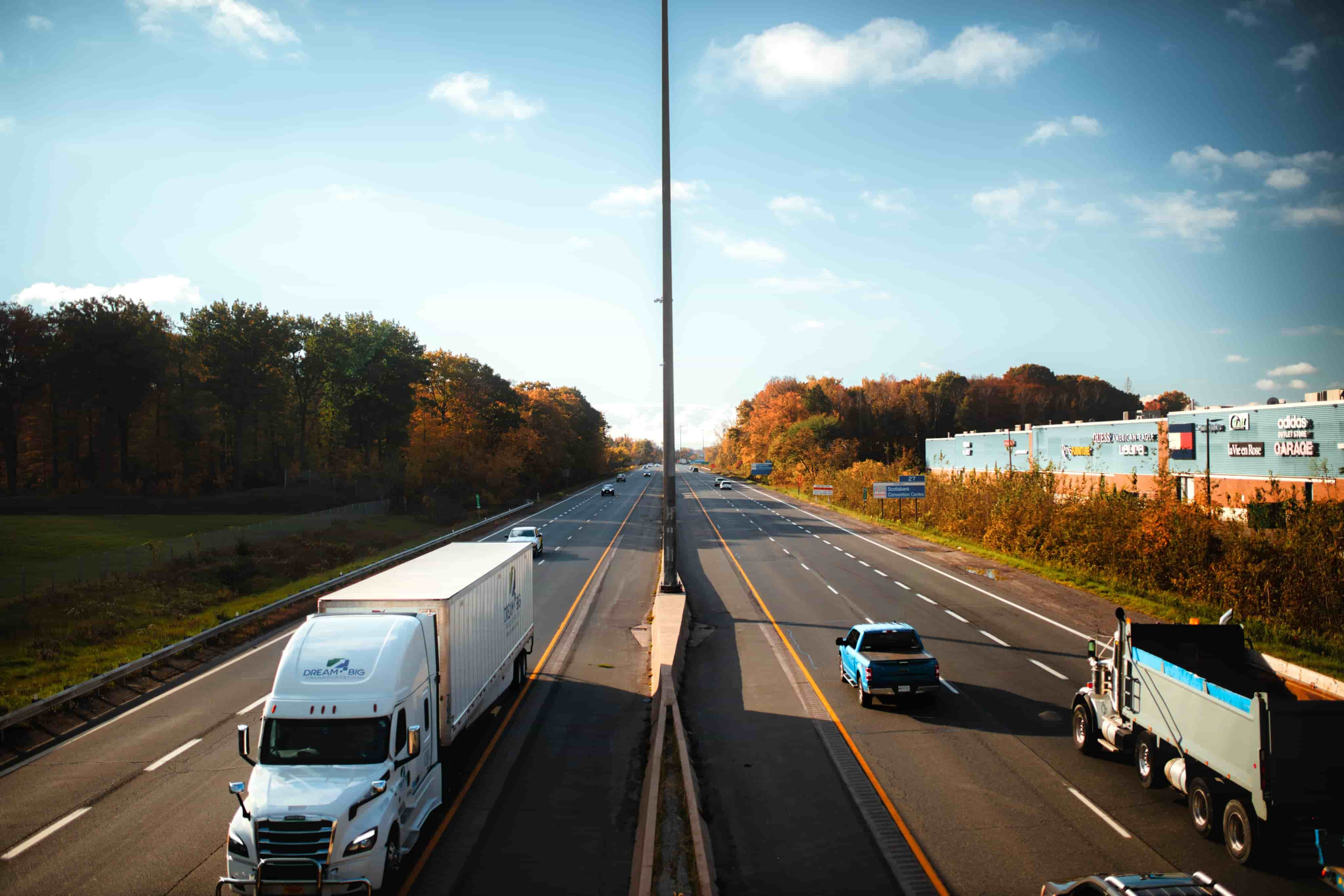
Making LTL Shipping Easier
Learn about the intricacies of Less-Than-Truckload (LTL) shipping and key insights into the LTL shipping process. Touching on tips for safety and efficiency and the advantages of partnering with logistics experts like FreightCenter, whose goal is making LTL shipping easier.
Less-than-truckload (LTL) shipping is the most popular, reliable, and cost-effective method. However, it can be complex and confusing if you’re unfamiliar. Think of LTL shipping as a ride share. Your freight will share space in a trailer with other shippers’ freight en route to its destination.
LTL shipping is best for cargo that weighs 150 lbs. or more. This includes items larger than a parcel but smaller than a full truckload. Typically, LTL shipments are palletized or crated to reduce damage risk and comply with carrier guidelines.
You should use LTL shipping when looking to cut costs. Although rates can be lower with this method, it comes with the downside of longer transit times. This will vary depending on your location and the destination of your shipment.
LTL shipping is best for cargo that weighs 150 lbs. or more. This includes items larger than a parcel but smaller than a full truckload. Typically, LTL shipments are palletized or crated to reduce damage risk and comply with carrier guidelines.
You should use LTL shipping when looking to cut costs. Although rates can be lower with this method, it comes with the downside of longer transit times. This will vary depending on your location and the destination of your shipment.
A common misconception is that your LTL freight shipment’s journey begins at point A and ends at point B on a direct route. In reality, the average LTL freight shipment goes through at least 6 moves on a forklift, followed by transportation on at least 3 different trucks before it arrives at its destination.
Here’s how that breaks down:
- Pickup – To maximize capacity in the trailer, your shipment is picked up by a locally operated truck. Your freight will then be taken to a nearby terminal, and this truck will pick up other LTL shipments.
- Drop-off at Origination Terminal – The truck carrying your shipment arrives at a central hub/terminal. This is where your LTL shipment is removed from that truck, organized, and put onto a different truck for shipping.
- Long-haul Truck – Your shipment is then moved onto this truck for the long haul to its destination location. Keep in mind this truck shares its space with other LTL shipments. Typically, this truck goes to another terminal, not the final destination location.
- Drop-off at Destination Terminal – Once the long-haul truck arrives at the destination terminal, your freight is again removed by a forklift. Your freight is then organized into the right locally-operated delivery truck.
- Loading the Delivery Truck – The delivery truck that your shipment loads onto depends on your shipment. Cargo that needs a liftgate or is being delivered to limited access locations will be placed on trucks that serve those needs.
- Delivery – Finally, LTL freight is delivered to its final destination.
Understanding the process behind how your LTL freight moves helps you manage your expectations regarding transit times. And as you can see, LTL freight typically takes longer than truckload for freight to arrive. Therefore, allowing more time for your LTL freight to arrive at its final destination is important. Because of the lengthy process, it’s even more important to keep tracking your shipment. Ensures that you can account for the unexpected, like weather delays.
Package for Safety
As mentioned, your LTL shipment will constantly travel with other shippers’ items. And when you’re shipping over distances like Florida to New Jersey, you want to ensure your items remain safe and unharmed. Regarding safety, proper packaging is at the top of the list of easy ways to avoid freight damage and loss claims.
Pallets are a shipper’s best friend since readily accessible forklifts can easily move around them. Shrink-wrapping your freight to a pallet without having anything overhanging off the sides of the pallet can help prevent damage from shifting items during the loading, transport, and unloading phases.
New to the shipping game? No problem! Check out our free guide to freight packaging to get tips and tricks on shipping your next shipment. If you’re unsure how to package your freight properly, you can also contact your carrier or 3PL. They can help you identify what types of packaging your specific freight shipment might need.
Provide Accurate Information
Providing your shipping agent with accurate information may sound like an obvious tip, but it is essential. The carrier will always use certified weight scales and measuring tools to measure your shipment. If your weight or measurements don’t match what the carrier reports during the inspection, you could incur a potentially costly billing adjustment.
A shipment’s freight class is based on weight and measurements. So, estimating your weight and measurements or guessing your freight class can also lead to additional costs later.
Purchasing a freight scale may be a good business investment if you ship frequently. If a purchase like this isn’t in your current budget, you could partner with a local business to use their freight scale. Remember, when appropriately packaged on the pallet, you will want to weigh and measure your shipment. The pallet will add height and weight to your shipment that you need to report.
Accurate freight class, weight, and measurement reporting will save you time and money.
Additional Insurance Coverage
It doesn’t hurt to know your options when it comes to freight insurance. Freight insurance can help protect you from unexpected damage and loss. Some types of freight are simply more valuable than others. The limited liability coverage provided by the carrier may not fully cover freight damage or loss. If you are a regular shipper or run a business that relies on a constant supply chain move, things may go wrong. Insurance is a safety net, ensuring you can adapt to unwanted occurrences.
Use Technology
There are many advantages to using a Transportation Management System (TMS). A TMS is a software solution that helps automate certain shipping functions. TMS is designed to help you save time and money. It helps centralize and consolidate shipping options so you can select the best option for your shipment quickly and easily.
The top three benefits of using a TMS include providing business insights, easily sourcing capacity with flexibility, and, most importantly, saving you time and money. You can optimize your shipping strategy and improve any inefficiencies you identify within your supply chain.
FreightCenter has Tips for Making LTL Shipping Easier
Partnering with a third-party logistics provider (3PL) like FreightCenter makes LTL shipping easier. Thanks to our large network of national trucking companies integrated with our powerful Transportation Management System (TMS), our expert shipping agents simplify your shipping process. This allows you to make the right logistics and shipping decisions for your business. FreightCenter helps you spend more time running your small business and less time worrying about shipping. Start by getting a free online quote today, or call us at 800.716.7608.
Awards and Endorsements
- 2021, 2017 & 2016 Food Logistics’ Top Green Providers
- 2021 & 2018 Supply & Demand Chain Executives’ Pros to Know: Matthew Brosious
- 2020 & 2019 Top Food Logistics’ 3PL & Cold Storage Provider Award
- 2020 & 2019 Business Observer’s Top 500 Companies on the Gulf Coast
- 2020 & 2019 Business Observer’s Top 500 Companies on the Gulf Coast
- 2020 & 2017 Food Logistics’ Champions: Rock Stars of the Supply Chain
- 2020 Best of Palm Harbor Awards for Local Businesses
- 2017 Green Supply Chain Award from Supply & Demand Chain Executive
- 2017 Tampa Bay Business Journal Heroes at Work
- 2016, 2015, & 2012 Food Logistics Top 100 Software and Technology Providers
- 2013 Tampa Bay Business 100 by Tampa Bay Business Journal
- 2013 Top 100 Great Supply Chain Partners by SupplyChainBrain
- 2012 TIA Samaritan Award Honorable Mention
- 2012, 2011 & 2010 TBBJ Fast 50 Recipient

To create value for our customers by delivering customized shipping solutions that meet their unique needs and to fulfill shipping demands from simple to complex with expertise, guidance and ingenuity.
Rail shipping is a cost-effective and environmentally friendly transportation method that utilizes trains to move goods over long distances. It's known for its efficiency in handling large volumes of cargo, making it a sustainable and economical choice for businesses seeking reliable freight transport options.
Expedited shipping is a premium service designed to meet urgent delivery needs. It prioritizes speed and quick turnaround, ensuring that packages or goods reach their destination faster than standard shipping options. Expedited shipping is the go-to choice when time-sensitive deliveries are essential, providing businesses and individuals with reliable and prompt service for critical shipments.
White glove shipping is a premium service that goes beyond standard delivery, offering meticulous handling, specialized packaging, and in-home setup or installation for valuable or delicate items, ensuring a seamless and hassle-free experience for customers.
Less than truckload (LTL) shipping is a smart logistics solution for businesses with smaller shipments. It combines multiple smaller shipments into a single truckload, optimizing space and reducing costs. LTL shipping offers affordability and efficiency while ensuring timely delivery, making it an ideal choice for companies looking to save on transportation expenses without compromising on service quality.
We provide competitive freight shipping prices and an all-inclusive, easy-to-use shipping experience for our customers. Exceeding our customers’ expectations results in thousands of satisfied customer reviews and repeat business. We believe in the power of our customer relationships. Check out FreightCenter reviews from real customers, and learn what they have to say about their freight shipping experience!


